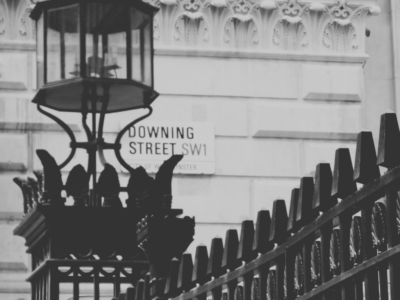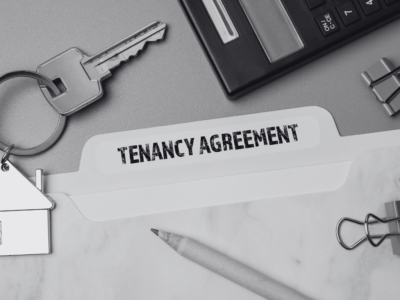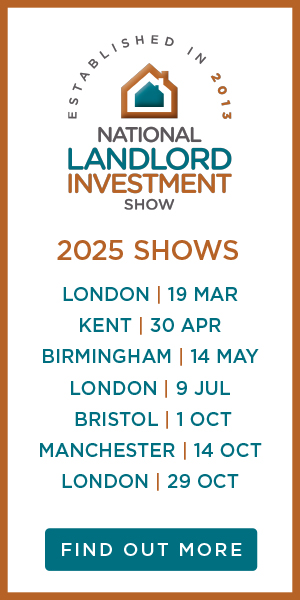The past year has been anything but ordinary for the UK housing market. After a turbulent end to 2018, with Boris Johnson’s predecessor as Prime Minister facing discord from all sides, plus a delayed meaningful vote on a Brexit deal, some hoped 2019 might offer some resolution to the long-running Brexit saga, and help restore clarity to the markets.
For many, 2019 was simply an extension of this saga, with a number of record defeats for the government, before not one but two delays to the UK’s withdrawal from the EU, after MPs failed to agree to a deal in Westminster.
Next week, the UK returns to the polls for the third general election in four years – regardless of political affiliation, some kind of resolution to the political stalemate is top of the Christmas wishlist for many voters. To those operating in the housing market, here is a guide to what to expect from the political parties campaigning for your vote.
Having your say
Election day is Thursday 12th December, and polls are expected to open at 7am. To avoid missing your chance to cast a vote, plan ahead and choose a suitable time of day to do so before polling stations close at 10pm. A polling card will have been sent in the post, giving clear instructions about the nearest polling station to your address.
Voting is still possible if you have lost your polling card – if you believe you should have received one but can’t find any trace of it, make sure to contact your local Electoral Registration Office as soon as possible. For more information about voting in UK elections, check out the official government voting guide.
Now that the basics have been covered, we shall now examine what the political parties have to offer, this election season.
Conservatives defend their record
The Conservatives, led by Boris Johnson, have been in power since May 2010, and intend to defend their record and secure a workable majority, after what many perceived to be a poor showing in June 2017. The government has been vulnerable since then, as it lacked a proper majority of seats in Westminster, making it harder to pass bills, especially related to Brexit.
A couple of the party’s key manifesto pledges have simply been carried over from before Mr Johnson entered Downing Street, but their inclusion in the manifesto is important for the housing market nonetheless.
Mr Johnson is running on a platform of offering a so-called “better deal for renters”, which involves scrapping no-fault evictions, as provisioned in Section 21 of the Housing Act 1988. This pledge dates back to the original proposal made by Theresa May’s government back in April to scrap Section 21.
A Conservative government would also intend to increase the number of newly-built homes across the country, at a rate of 300,000 per year by the mid-2020s, as originally outlined in the previous government’s spring statement earlier in the year.
Tucked away in a small paragraph in the manifesto, the Conservatives also pledge to introduce a Stamp Duty surcharge on non-UK resident buyers. London is one of the UK’s prime destinations for foreign property investors, so this policy would have a disproportionate effect on the capital, compared to other regions.
Labour proposes a greener future
Having spent almost a decade in opposition, the Labour Party has produced a manifesto aimed at increasing the number of homes in a more targeted way, by ensuring that at least 150,000 new homes built each year will be council or social homes. Two thirds of these would be built by councils for social rent.
Jeremy Corbyn launched Labour’s election campaign, revealing plans for a green housing revolution, aimed at creating a new generation of eco-homes, fit for a future beyond fossil fuels.
Echoing the Conservative proposal to do so, Labour also wishes to scrap Section 21, as part of a plan to extend tenants’ rights. They also have plans for a government-funded union for renters, plus proposals aimed at controlling the level of rents by capping them to rise in-line with inflation.
Labour has even proposed a form of Right to Buy, which would allow renters to buy back properties from private landlords. Their proposals have been noted for being some of the most expensive of all the proposals suggested by main parties, with Labour wishing to increase public spending across government departments, after almost a decade of Conservative-led austerity.
Liberal Democrats focus on affordable homes
The Liberal Democrats have spent four years seeking to regain support, after losing trust from voters due to their years in coalition with the Conservatives. Leader Jo Swinson has made Brexit one of the key parts of her party’s manifesto, pledging to revoke Article 50 altogether, if her party wins the election outright.
For landlords and property investors, the party’s focus on affordable housing will be of great interest, as they wish to finance the building of social homes, through investment from a capital investment budget worth £130 billion. Full control over Right to Buy would be devolved down to local councils, while the party also wishes to scrap Section 21, helping form a cross-party consensus on the issue.
Not only this, but the Liberal Democrats seek to overhaul the private rented sector, by creating a Rent to Own model of social housing, allowing tenants to have what is described as “an increasing stake in the property”, with the option of being able to own somewhere outright after 30 years.
Council tax on properties bought as second homes would be hiked by 500 per cent, while the party wishes to mimic the Conservative policy of introducing a Stamp Duty surcharge on overseas residents, if they wish to acquire second homes for themselves.
Smaller parties demand action
Nigel Farage’s Brexit Party offered less defined housing policies, in a document a fraction the size of the other party manifestos, which they titled “Contract with the People”.
The party intends to focus on issues such as simplifying planning consents on brownfield sites and making it easier for councils to borrow from central government to build more council homes, but the single page of proposals included no specific targets for how many new homes the party wished to see being built.
The Green Party manifesto called for the provision of 100,000 more energy efficient homes each year, and would plan to deliver heating upgrades on a million homes per year. This is all part of their Green New Deal to tackle climate change, reduce fuel poverty and provide more affordable homes with a smaller carbon footprint.
The SNP manifesto set a target for 50,000 affordable homes in Scotland, and mentioned the SNP having ended Right to Buy in Scotland, which the manifesto claimed had helped to protect over 15,000 homes in the social rented sector.
The SNP intends to help Scottish first-time buyers get on the housing ladder, offering a £150 million scheme to provide loans of up to £25,000, to stimulate demand from prospective homeowners.
Plaid Cymru outlined plans for the Welsh housing market, with its manifesto aiming to help those in the rented sector, by supporting a new tax credit for those paying over 30 per cent of income on rent and utilities bills.
This is particularly important for the Welsh property market, as the manifesto claimed that 37 per cent of Welsh private renters earn less than £15,000 per annum.
Beyond the political debate surrounding Brexit and some of the more obvious issues relating to the property market, most of the political parties also showed a commitment to policies aimed at tackling the issue of homelessness, as well as measures to end rough sleeping nationwide.
These issues are especially important to address in this pre-Christmas general election, as thousands of people face a cold winter without a home, this festive season.
With just one week to go before millions of people go to the polls to cast their votes, the latest aggregated poll from Britain Elects suggests that the Conservatives enjoy a poll lead of over 10 per cent, suggesting the likelihood of a majority Conservative government.






















Comments